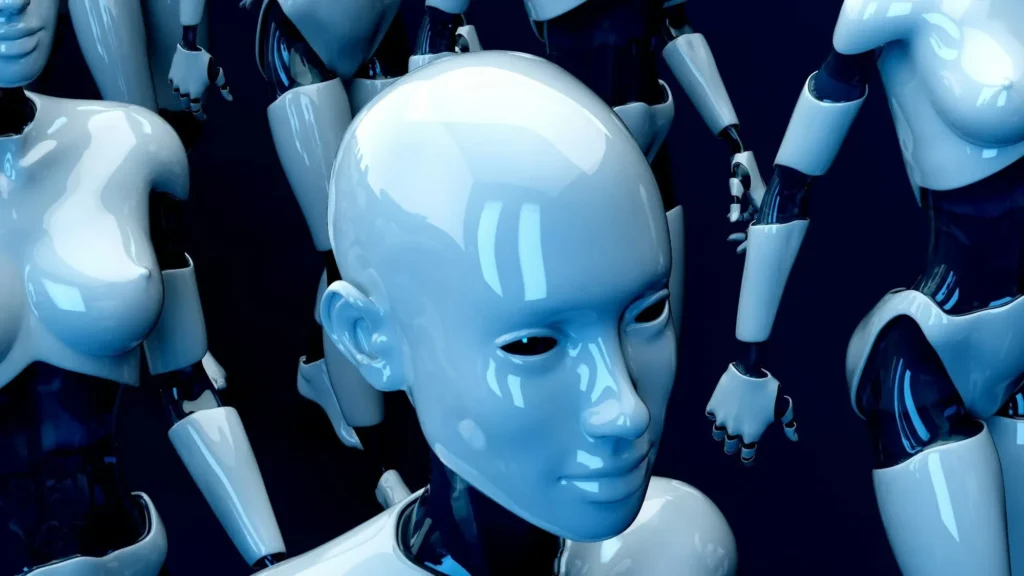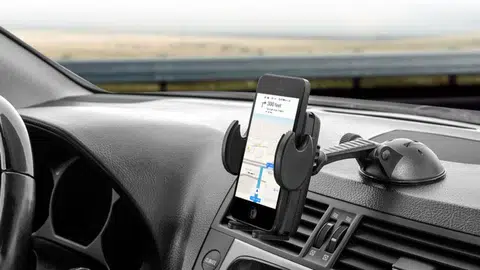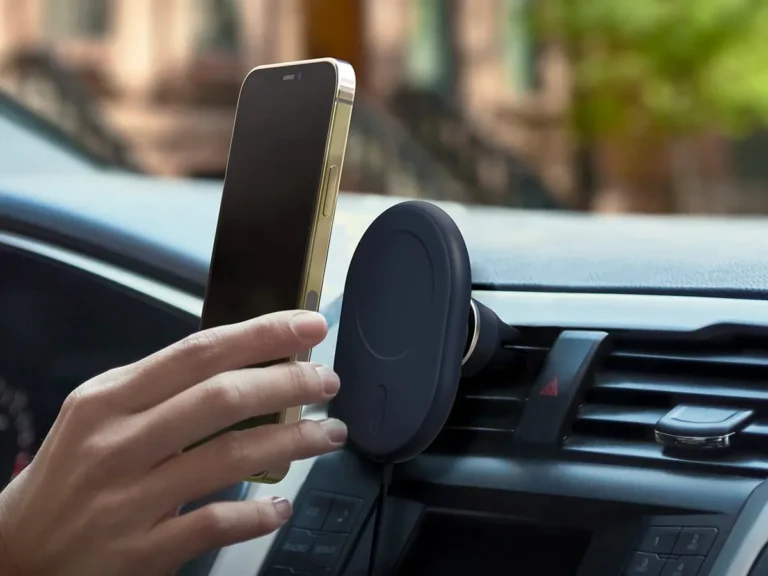Introduction
The Consumer Electronics Show (CES) 2025 in Las Vegas was a testament to the rapid advancements in robotics and artificial intelligence (AI). With over 4,500 exhibitors, the event highlighted groundbreaking innovations poised to redefine various industries and aspects of daily life. From smart home integrations to autonomous machinery, CES 2025 showcased a future where AI and robotics are seamlessly integrated into our routines.

With AI becoming more intelligent and autonomous robots gaining greater functionality, the innovations unveiled at CES 2025 provide a glimpse into a future where machines collaborate with humans in new and transformative ways. Whether it’s improving healthcare, agriculture, or personal convenience, these advancements signal a shift towards a highly automated and interconnected world.
Key Innovations Overview
- Samsung’s ‘Home AI’ Ecosystem
- Yukai Engineering’s ‘Mirumi’ Emotive Robot
- John Deere’s Fully Autonomous Agricultural Machinery
- NVIDIA’s ‘Cosmos’ AI Platform
- Halliday’s AI-Powered Smart Glasses
- Google’s AI-Integrated Television
- Samsung’s ‘Vision AI’ Smart Appliances
- AI-Powered Health Monitoring Mirror
- Robotic Exoskeletons for Enhanced Mobility
- AI-Driven Companion Robots
Each of these innovations represents a significant leap forward in AI-driven automation and intelligent robotics. Let’s take a closer look at how they are shaping the future of technology.
Detailed Discussion
1. Samsung’s ‘Home AI’ Ecosystem
Samsung unveiled its ‘Home AI’ system, an interconnected platform that seamlessly integrates household devices. This ecosystem anticipates user needs, offering a cohesive and intuitive smart home experience.
For instance, the system can adjust lighting, temperature, and even suggest entertainment options based on user preferences. The AI learns daily routines and automates mundane tasks, improving efficiency. Users can control multiple home appliances via voice commands, and AI-powered predictive maintenance ensures devices remain in optimal condition.
Samsung’s goal is to create an intuitive and proactive home environment, where AI acts as an invisible assistant, reducing the cognitive load of managing household tasks.
2. Yukai Engineering’s ‘Mirumi’ Emotive Robot
Yukai Engineering introduced ‘Mirumi,’ a fuzzy, emotive robot designed to provide companionship. Unlike traditional robots, Mirumi reacts to human emotions using advanced sentiment analysis and AI-driven behavior modeling.
Mirumi is equipped with facial recognition and voice detection, allowing it to interpret user moods and respond with comforting gestures or sounds. It is ideal for elderly individuals, children, or anyone who desires a non-human companion for emotional support.
Mirumi also integrates with smart home systems to offer reminders, schedule tasks, and even play music based on the user’s mood.
3. John Deere’s Fully Autonomous Agricultural Machinery
Agricultural giant John Deere showcased its fully autonomous machinery, signaling a new era in farming. These machines can perform tasks such as planting, harvesting, and soil analysis without human intervention, increasing efficiency and addressing labor shortages in agriculture.
The AI-powered system uses machine vision and GPS-guided navigation to optimize farming techniques. With real-time data collection and predictive analytics, farmers can make better decisions regarding crop management, soil health, and weather adaptation.
This technology has the potential to significantly improve food production, reduce labor costs, and promote sustainable farming practices.
4. NVIDIA’s ‘Cosmos’ AI Platform
NVIDIA unveiled ‘Cosmos,’ a suite of foundational AI models aimed at enhancing the capabilities of humanoid and industrial robots, as well as self-driving cars. These models generate images and 3D representations of the physical world, aiding robots in better understanding and navigating their environments.
Cosmos is designed to support robotics companies in developing AI-driven solutions that require real-time adaptation. By integrating deep learning and AI-powered sensory processing, Cosmos allows robots to handle complex tasks, such as warehouse management, disaster response, and autonomous navigation in dynamic environments.
5. Halliday’s AI-Powered Smart Glasses
Halliday introduced AI-based 3.5-inch smart glasses powered by DigiWindow technology. These glasses feature a discrete display and offer real-time language translation, intuitive controls, and the ability to take notes through audio, enhancing both personal and professional interactions.
Users can access augmented reality (AR) overlays for navigation, receive alerts, and interact with digital assistants without needing to look at their phones. These smart glasses also come with AI-powered facial recognition, allowing users to recall names and details about people they’ve previously met.
6. Google’s AI-Integrated Television
Google showcased an AI-based television that uses machine learning to offer personalized recommendations, control display settings, and provide seamless integration with smart home devices.
The AI adapts to user viewing habits, automatically adjusting screen brightness, audio levels, and recommending content based on personal preferences. Additionally, Google’s AI can provide real-time transcriptions and translations for multilingual accessibility.
7. Samsung’s ‘Vision AI’ Smart Appliances
Samsung launched ‘Vision AI,’ a lineup of smart TVs and home appliances equipped with displays. The primary goal is to offer personalized experiences through AI-based screens, enhancing user interaction and convenience in daily tasks.
For instance, Vision AI refrigerators can suggest meal recipes based on available ingredients, while AI-powered washing machines optimize washing cycles depending on fabric type and dirt levels.
8. AI-Powered Health Monitoring Mirror
A notable health tech innovation was the AI-powered health monitoring mirror. This device integrates AI to monitor vital signs, providing actionable health insights and offering a glimpse into the future of personalized health monitoring.
Using computer vision and biometric sensors, the mirror can track heart rate, respiratory patterns, hydration levels, and skin health. It provides health recommendations, connects with fitness apps, and alerts users about potential health risks.
9. Robotic Exoskeletons for Enhanced Mobility
Advancements in robotic exoskeletons were prominent at CES 2025. These AI-driven devices offer self-balancing and omnidirectional movement, providing mobility solutions for individuals with physical disabilities and enhancing human capabilities in various applications.
Industries such as construction, manufacturing, and military applications stand to benefit from these exoskeletons, which reduce fatigue and increase efficiency. AI-integrated exoskeletons also help rehabilitate patients recovering from injuries or neurological disorders.
10. AI-Driven Companion Robots
The event also highlighted AI-driven companion robots designed for various purposes, including healthcare and personal assistance. These robots aim to provide support and companionship, particularly for the elderly and individuals with specific needs, enhancing quality of life through advanced interaction capabilities.
Equipped with natural language processing and machine learning, these robots can engage in meaningful conversations, detect emotions, and provide assistance with daily activities, such as medication reminders and emergency alerts.
Conclusion
CES 2025 underscored the transformative potential of robotics and AI across multiple sectors. From enhancing daily living through smart home integrations to revolutionizing industries like agriculture and healthcare, the innovations showcased promise a future where technology seamlessly augments human capabilities. As these advancements continue to evolve, they hold the potential to address pressing challenges and improve quality of life on a global scale.
FAQs
Q1: What is Samsung’s ‘Home AI’ system?
A1: Samsung’s ‘Home AI’ is an interconnected platform that integrates household devices, anticipating user needs to offer a cohesive and intuitive smart home experience. It can adjust settings like lighting and temperature based on user preferences.
Q2: How does Yukai Engineering’s ‘Mirumi’ robot provide companionship?
A2: ‘Mirumi’ is designed to react to human emotions, offering comfort and interaction. Its fuzzy, emotive design makes it ideal for individuals seeking non-human companionship.
Q3: What are the capabilities of John Deere’s autonomous agricultural machinery?
A3: John Deere’s fully autonomous machinery can perform tasks such as planting, harvesting, and soil analysis without human intervention, increasing efficiency in agriculture.
Q4: What is NVIDIA’s ‘Cosmos’ AI platform?
A4: ‘Cosmos’ is a suite of foundational AI models designed to enhance the capabilities of humanoid and industrial robots, as well as self-driving cars, through real-time adaptation and AI-powered sensory processing.







